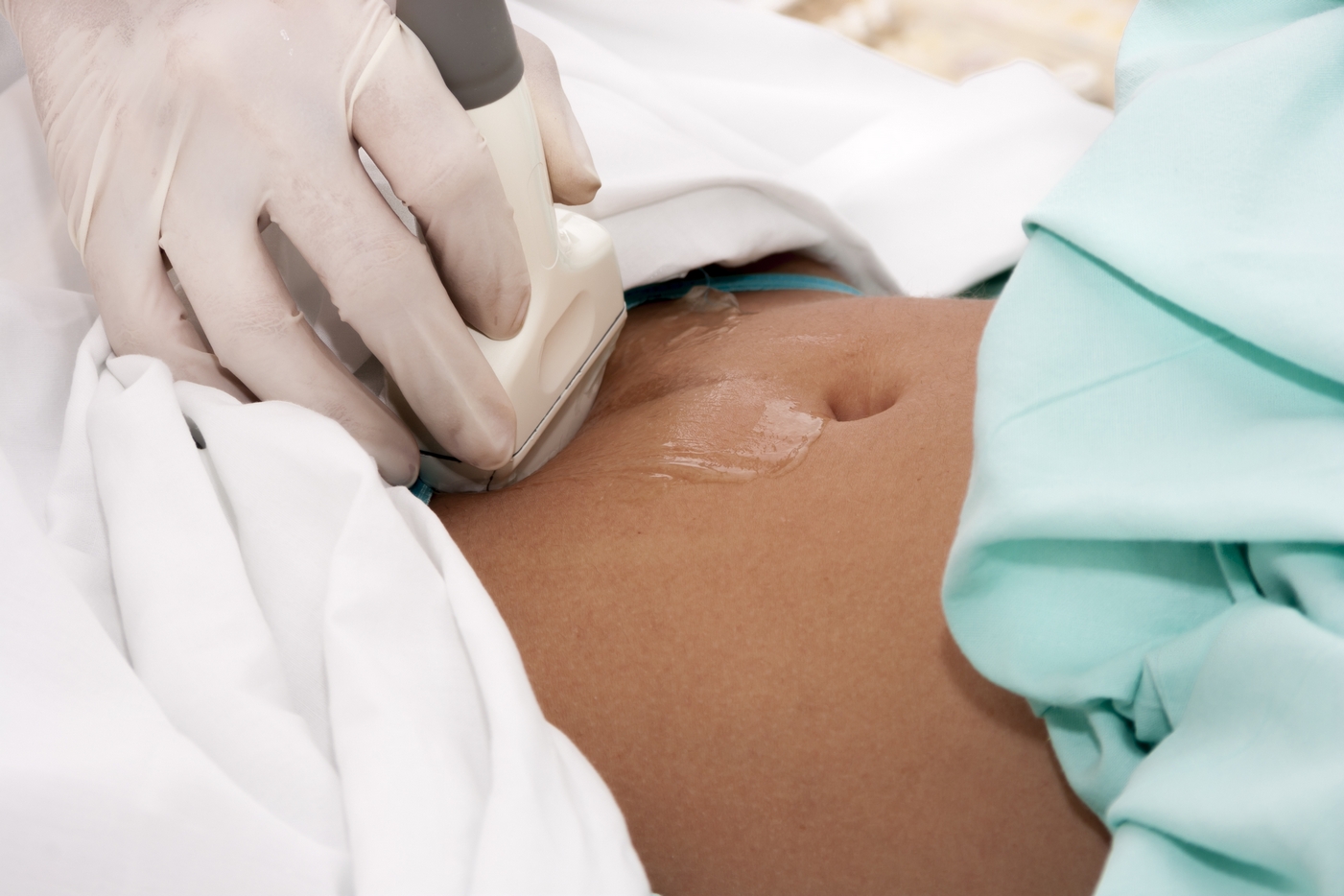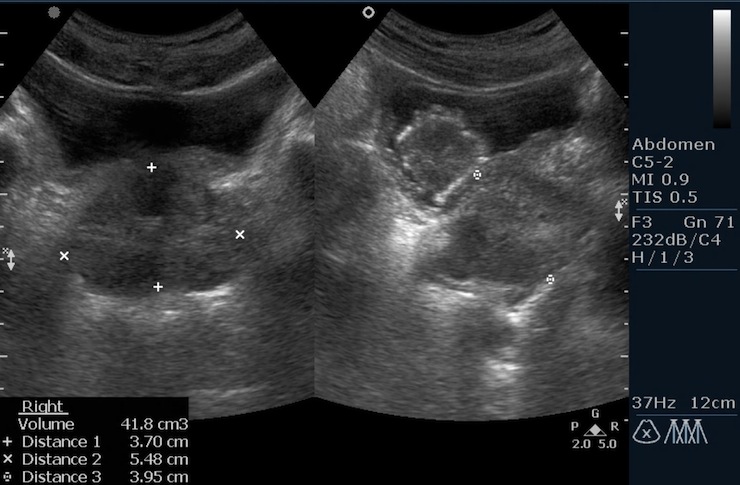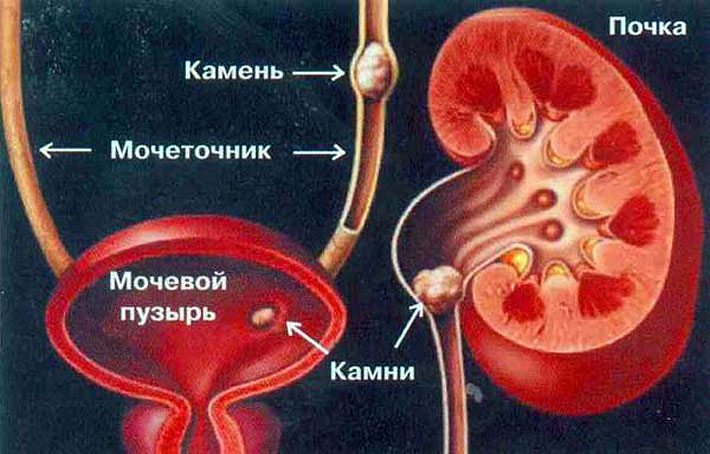How is bladder volume measured?
Depending on the sex and age of the person, the volume of the bladder may differ from the normal one up or down. A normal, healthy organ is able to accumulate and retain urine for up to 3 hours, but if a person suffers from any disease, then the urinary system may not work properly.
This urinary organ is located in the pelvic area, behind the pubic symphysis. In the representatives of the stronger sex, it is adjacent to the intestines and genitals. In women, it borders the uterus and vagina (vagina). The bladder is a hollow organ that is a kind of reservoir for urine, from which the urethra departs. He distinguishes:
- top;
- Body;
- Shayk.
Volume and its normal dimensions

The usual, normal volume of the urine collection cavity in adults varies on average from 250 to 500 ml, but can reach 600 - 700 ml. The first urge to go to the toilet begins to appear when there is 100 ml of urine in the urinal. With an increase in volume to 150, the urge to urinate becomes more pronounced. The adult human body can normally retain large amounts of urine, but many medical studies have shown that holding urine is unhealthy. It negatively affects the entire genitourinary system, kidneys, intestines, and nearby organs, which are under great pressure.
- The volume of MP in men reaches 700 ml;
- In women, the normal size of the cavity reaches 500 ml.
When the volume of urine increases, the wall thickness of the filled reservoir is only 2-3 mm. But after the act of emptying, the wall contracts and normally becomes 12-15 mm in thickness.
In infants, the urinary organ reaches a size of 5-7 cm and has a spindle shape. But by the fourth year of a child's life, it increases to 15 cm, already having a pear-shaped shape. During adolescence, when all body systems are actively growing and changing, weak development of the muscular membrane of the organ, a decrease in the volume of the bladder, and incontinence may occur. In the period of 8-12 years, the child's bladder takes the form of an egg, and in the future it takes the form of an adult organ.
The capacity of the MP of a newborn child is 40-70 cm³. At the age of 5 years, the container already holds up to 200 ml of urine. By the age of 12, this number is already 250 ml, and eventually reaches the final size.
Volume determination

Most often, ultrasound diagnostics is used to determine the size of the internal organ. With the help of an ultrasound machine, measurements are taken on the monitor and, using simple formulas for finding the volume of a cylinder or ellipsoid, determine the corresponding capacity. To obtain more accurate results, ultrasound is carried out in conjunction with catheterization, measuring the resulting volume of urine. The two diagnostic results are compared and the average is taken.
The size of any internal organ can be determined using x-rays. It is filled with a radiopaque substance, and is seen on the x-ray.
Shrinkage (wrinkling) of the organ
Shrinkage or wrinkling is a condition in which there is a violation of the functionality of the organ, and a decrease in its capacity, which greatly affects the quality of life.
Reasons for drying out:
- Helminthiases. For example, schistosomiasis, which can be obtained by drinking contaminated water in tropical regions of the globe;
- The consequences of radiation therapy, which is used in the treatment of cancer;
- Nutrition, excessive consumption of protein foods;
- Tuberculosis infection that can affect any organ.
Symptoms of the disease:
- The urge to urinate, which occurs more than 7-10 times a day;
- Very strong urges, in which it seems to a person that he is not able to endure a single minute;
- Frequent nighttime urination, from which a person cannot fall asleep or wakes up more than 2 times at night. This also includes involuntary urination during sleep;
- Small amount of excreted urine. At the same time, a person experiences a strong urge to go to the toilet, but the amount of urine excreted is very small.
Diagnosis of the disease is carried out in one of the following ways:
- Cystoscopy, that is, examination by introducing a device through the urethra into the organ cavity, followed by a biopsy;
- X-ray examination, that is, saturation with a radiopaque substance and further analysis of the image;
- Urodynamic studies, that is, the study of the behavior of the organ using sensors on the anterior abdominal wall, as well as measuring the speed of urination;
- Urography - a method of introducing a contrast agent into a vein and recording the state of the system after its removal;
- Ultrasound examination of the urinary organ, as a result of which an image is built on the doctor's monitor, according to which measurements are taken, analyzed by the urologist;
- Cultures for bacteria, cultivation of bacteria on a nutrient medium and their microscopy are used in cases of suspected infectious diseases;
- A general analysis of urine and blood, in which leukocytes, erythrocytes and ESR are counted, the presence of erythrocytes and leukocytes in the urine is analyzed. In addition, with a general analysis, a search for pathogenic bacteria can be carried out;
- Measurements of the amount of urine after the act of urination. In this case, the patient urinates throughout the day into a measuring container and measures the volume.
Enlargement of the body occurs as regularly as its shrinkage. An enlarged (megacystis) organ may be more than 700 ml in volume, but the amount of urine released from it does not increase.
Reasons for an increase in organ capacity:
- Benign and malignant formations. During the formation of benign neoplasms, cells are not able to control division and retain the ability to differentiate; a malignant tumor is different in that cells lose control over both division and differentiation;
- The use of various medications, for example, drugs that affect the neuromuscular connection;
- Tumor disease of the urinary system, cystoma. Cells divide and grow uncontrollably, destroying adjacent tissues;
- Diabetes mellitus, impaired glucose uptake and insulin production;
- Various diseases of the prostate that affect the volume of the bladder in men. Prostatitis - inflammation of the prostate gland, possible prostate adenoma - a benign tumor of the glandular epithelium of the prostate gland; tuberculosis infection of the prostate gland - a decrease in the size of the prostate gland, accompanied by pain. All these diseases can lead to problems with urination;
- Contractures of the neck of the urinary bladder, that is, too much development of the connective tissue and a violation of its elasticity;
- Stones that enter the cavity from the urinary tract or form there, leading to blockage of the urethra and stagnation of urine;
- Violation of nervous activity, as a result of which a person does not feel the filling of the bladder and the urge to urinate.
To diagnose the disease in men and girls, it is enough just to contact a therapist. After a superficial diagnosis, the therapist will give a referral to a doctor of a narrow specialty for the treatment of kidney problems, problems of the reproductive system or other diseases.
Treatment of a wrinkled and enlarged organ is carried out according to the same scheme and approximately the same methods. First, the doctor must diagnose the disease, and only then offer solutions to the problem.
Reactive treatments:
- Injections of neurotoxins that are injected into the urinary duct. They disrupt the conductivity of nerve fibers, which contributes to the retention of urine;
- Hydrodilation, that is, the injection of water into the cavity and walls of the organ.
Surgical methods of treatment:
- Transurethral detrusorotomy, that is, excision of the nerves;
- Cystectomy, in which the amputation of the organ is performed. Such an operation is performed in extreme cases, for example, with an overgrown inoperable tumor. In this case, the excised organ is replaced by an artificial one;
- Myocystectomy, that is, the removal of the muscular membrane;
- Augmentation cystoplasty. The organ is removed and replaced with a tissue that is part of the intestines or stomach.
How is an enlarged bladder treated in men and women:
- Treatment of the endocrine system;
- In the presence of stones in the urinary tract, their immediate removal by surgery is required;
- Treatment of neoplasms;
- Surgical expansion of the urethra by removing the narrowed part and installing a stent;
- catheterization or catheter replacement;
- Physiotherapy, such as heat, massage, and other non-stress therapies;
- Herbal infusions that heal the kidneys and other organs of the system.
For treatment at home are carried out: light massage, warm shower or heating pad, complete relaxation of the body.
Increased MP in an embryo or fetus

The formation of the bladder in the fetus begins on the 25-27th day of pregnancy. Final development at 21–22 weeks of gestation. Even during this period, there may be an increase in the bladder, the so-called megacystis. Megacystis is formed when the length exceeds 8 mm. Megacystis is obstructive in nature and may be a signal of incised abdomen syndrome (a rare congenital malformation characterized by multiple developmental disorders of the genitourinary system). This syndrome can be diagnosed from the 2nd trimester of pregnancy. If it is found, then the pregnancy is usually recommended to be terminated.
Megacystis in the fetus is curable. In some cases, it can spontaneously return to normal. Vesicocentesis is performed to assess the condition of the bladder with this diagnosis. This method is based on piercing the woman's abdomen, the walls of the organ of the fetus and penetrating into its cavity. From there, the residual urine is taken and examined. With the help of this, many diseases of the genitourinary system of the embryo are detected. With timely vesicocentesis, you can reduce the likelihood of losing a child and developing pathologies in him.
There is a set of preventive measures suitable for women and men, which allows you to strengthen the walls of the organ. To cure the kidneys and the entire urinary system, doctors recommend eating right and giving up bad habits that destroy the entire body.




